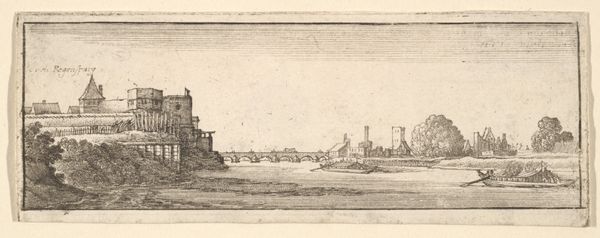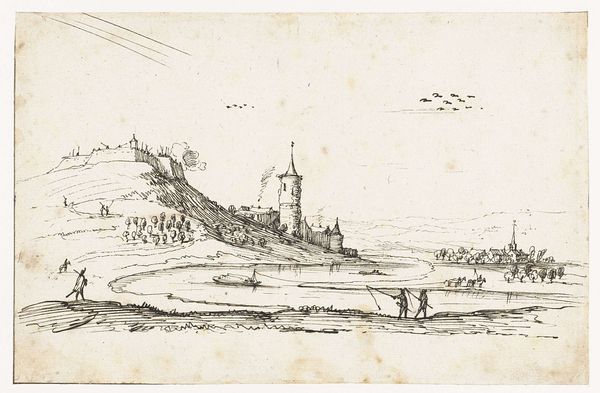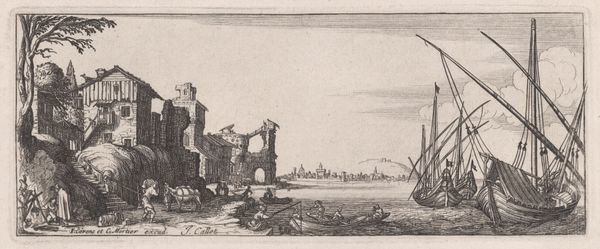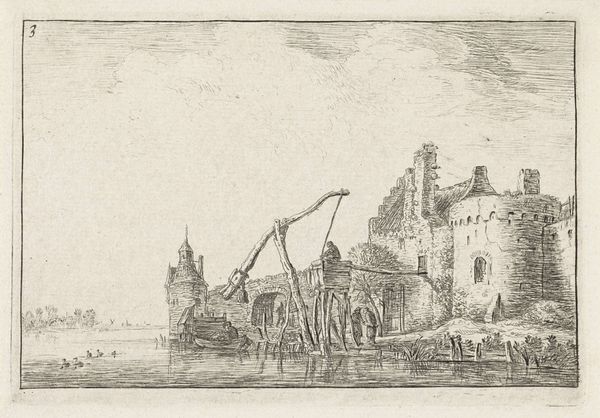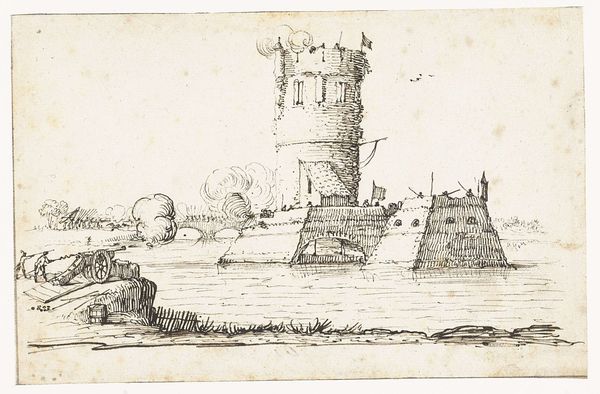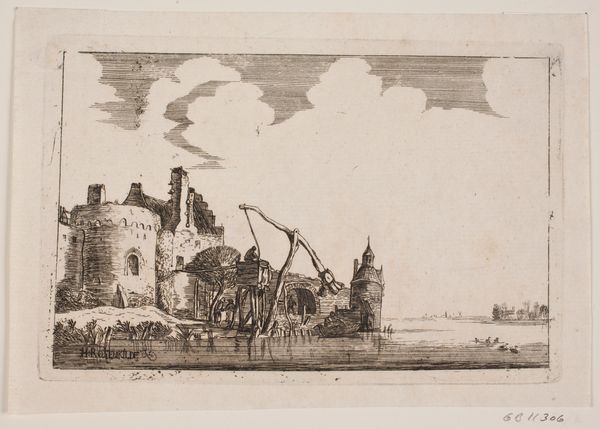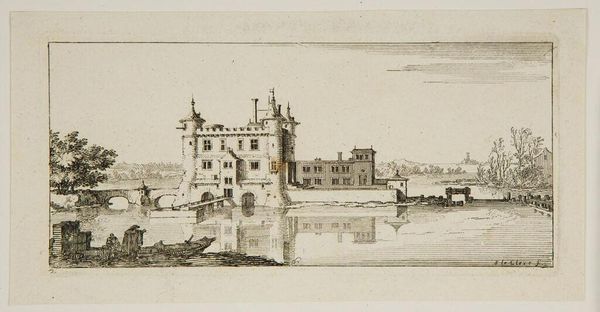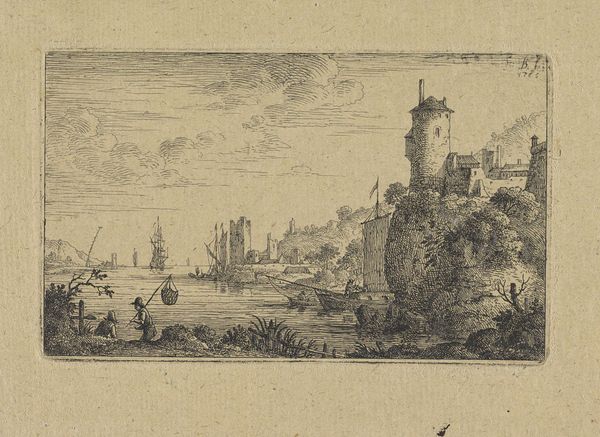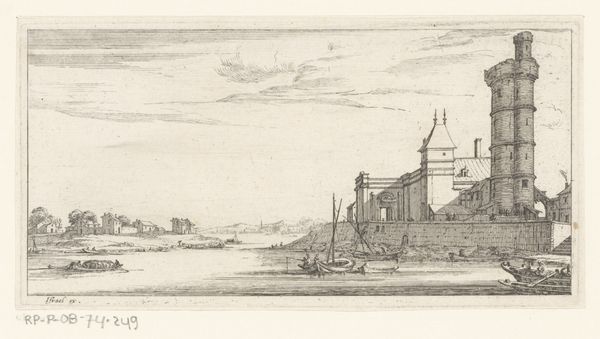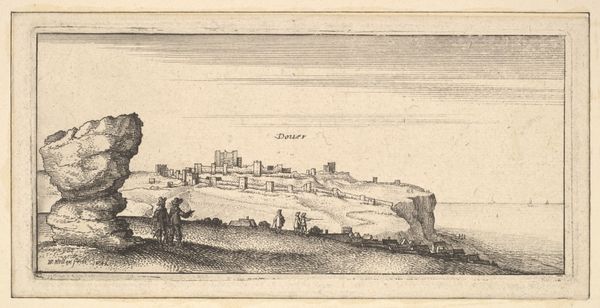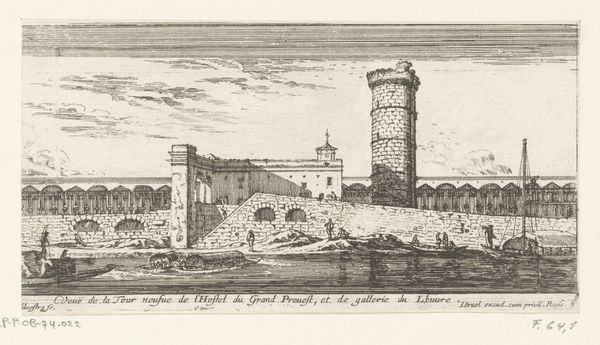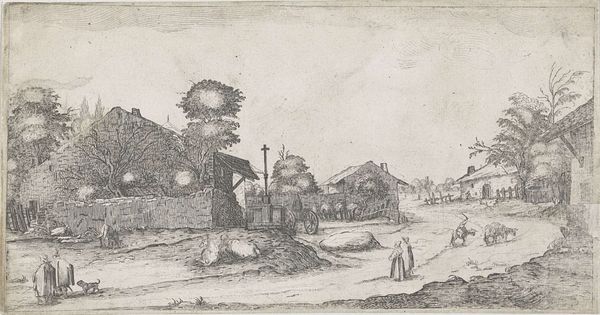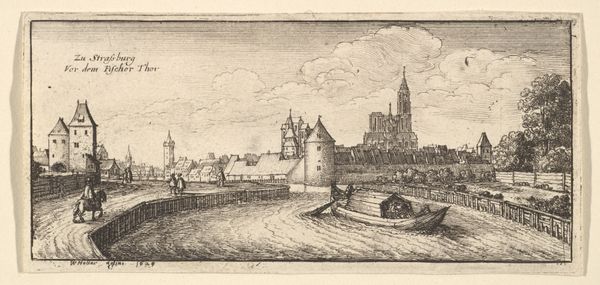
drawing, print, etching, paper, ink, engraving
#
drawing
#
baroque
# print
#
etching
#
old engraving style
#
landscape
#
river
#
paper
#
ink
#
cityscape
#
engraving
Dimensions: height 96 mm, width 177 mm
Copyright: Rijks Museum: Open Domain
Editor: This is "Gezicht op een fort aan de Rijn nabij Keulen," or "View of a Fort on the Rhine River near Cologne" by Wenceslaus Hollar, an etching from around 1627 to 1636. I find it really striking how detailed and precise it is, especially for its small scale. What stands out to you about this piece? Curator: What I notice first is how Hollar situates this fort not just as an architectural object but as a component within a complex social and political landscape. Consider the date – the early to mid-17th century – a period rife with religious conflict and the Thirty Years' War. How does the presence of this fortified structure reflect the anxieties of the time? Editor: So, it's not just a pretty picture, it's about power? The fort dominating the scene, the Rhine acting as both a connector and a barrier… it speaks to a controlled and contested space. Curator: Precisely. Think about the intended audience for these prints. Were they for local consumption, reminding citizens of the protection they received? Or were they aimed at a wider European market, advertising Cologne’s strategic importance or even signaling its military strength to potential allies or adversaries? The inclusion of the names, such as "Beyen Thurn", on the cityscape itself supports that. Editor: That's fascinating. I hadn't considered how prints like this served a propagandistic purpose. Does the act of etching itself influence the political implications of the image? Curator: Good question. Etching, with its capacity for detailed line work, allowed for the dissemination of standardized, reproducible images. In essence, it democratized access to specific visual narratives of place, shaping perceptions and potentially reinforcing political agendas on a mass scale. This becomes art embedded in social and political functions. Editor: I see now how Hollar's technical skill isn’t just aesthetic; it’s part of the message. I'll never look at a historical landscape print the same way again. Curator: Exactly! By exploring art through the lens of cultural context, we realize that the most innocuous looking images can harbor the deepest insights.
Comments
No comments
Be the first to comment and join the conversation on the ultimate creative platform.
